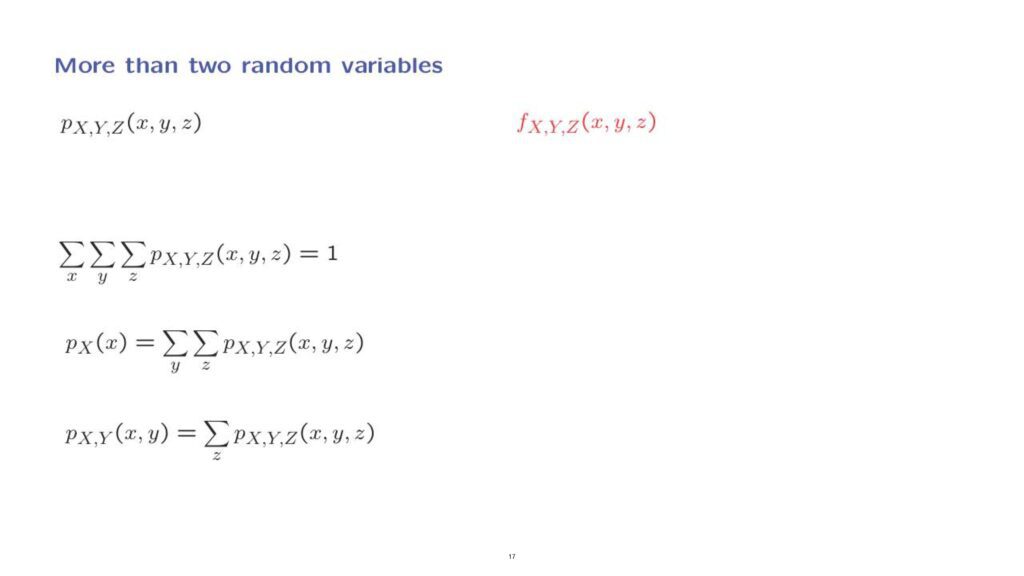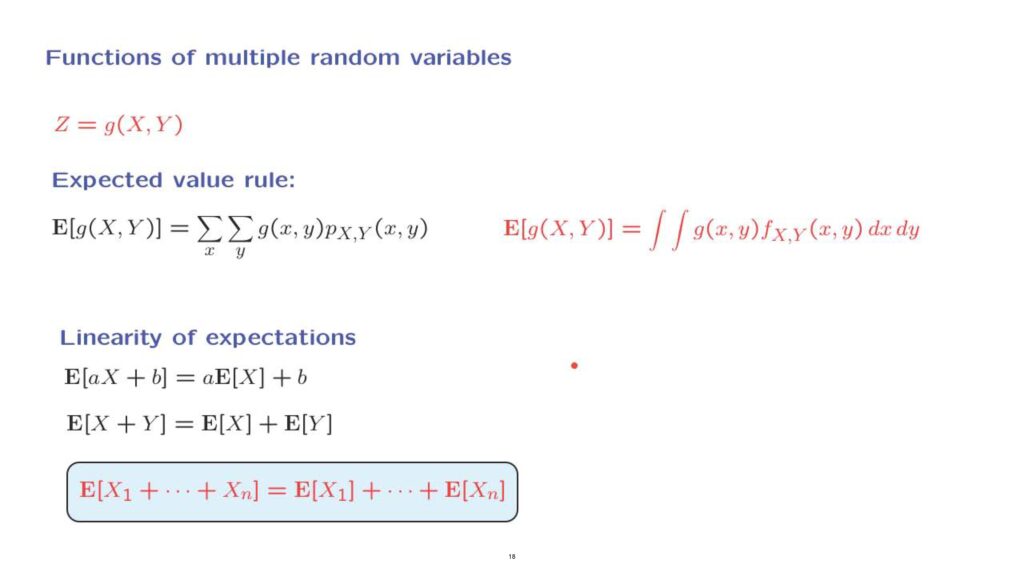In this segment we will go very fast through a few definitions and facts that remain true in the continuous case.
Everything is completely analogous to the discrete case.
And there are absolutely no surprises here.
So, for example, we have defined joint PMFs for the case of more than two discrete random variables.
And we have a bunch of facts about them.
In a similar manor, we can define joint PDFs for more than two random variables.
And if you have understood the material so far, you can guess how such a joint PDF will be used.
For example, you can calculate the probability of a three dimensional set by integrating the joint PDF over that three dimensional set.

And there are analogs off all of the other formulas that we have here where we follow the usual recipe.
Sums become integrals, and PMFs are replaced by PDFs.
Finally, when you deal with a random variable, which is defined as a function of jointly continuous random variables, we can use an expected value rule that takes the same form as in the discrete case.
And using the expected value rule, we can establish, once more, the usual linearity properties of expectations.
So absolutely no surprises here.
The derivations are either completely straightforward.
Or they follow exactly the same line of argument as in the discrete case, with just minor changes in notation.
